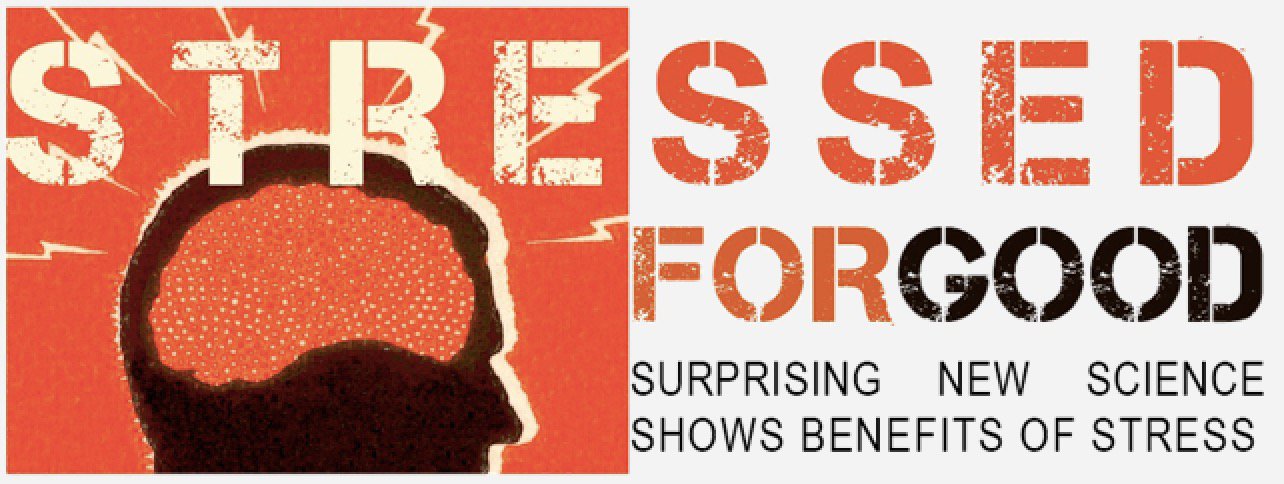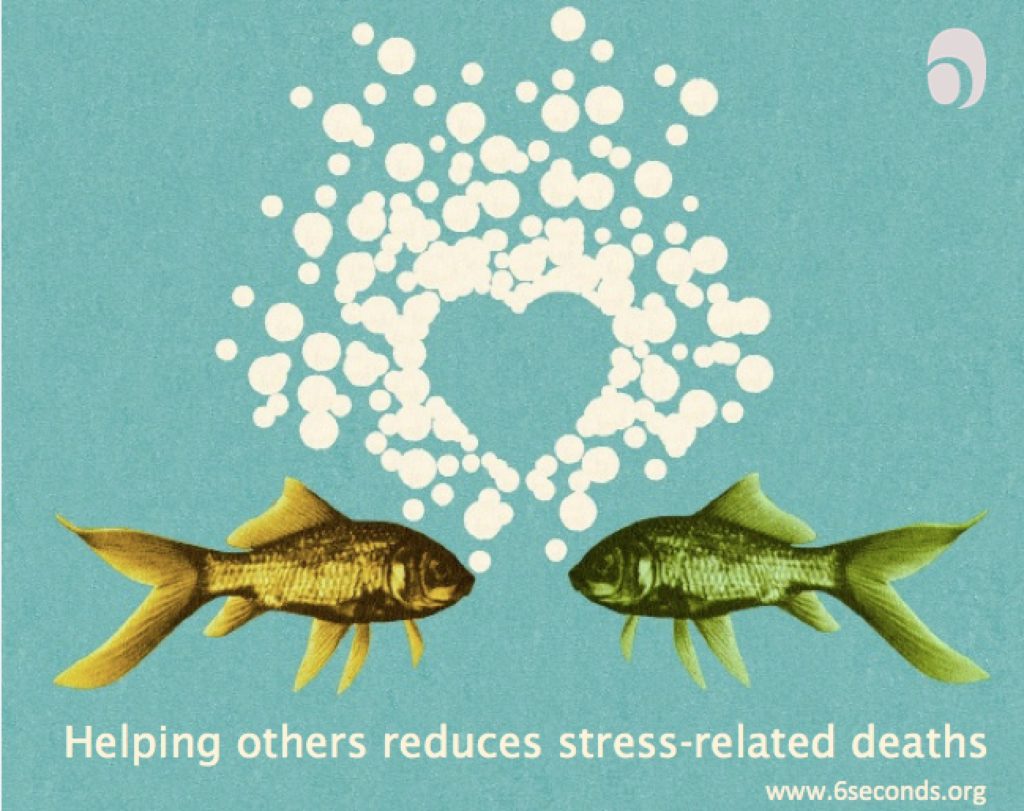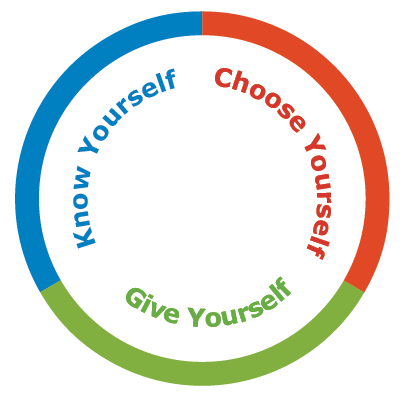Stress is getting a whole new look thanks to Kelly McGonigal in her latest book The Upside of Stress. How you think about stress matters. “When you change your mind about stress you can change your body’s response to it.”

Stressed to Death
We know that stressing is bad and it’s all over the news. But recent research takes stress to a new level. It turns out that our attitudes about stress make it a killer. Researchers at University Wisconsin Madison, a sample of 30k people reported feeling high stress AND held negative view of stress (reported that stress impacted their health a lot), participants had a 43% increased risk of premature death. It turns out — stressing about stress — make stress USA’s 12th biggest killer, greater than AIDS or Homicide.
.
Stress is a Message
Stress is a physical and emotional signal. Stress means we care about something and it’s at risk. When we stress our heart rate increases, breathing becomes rapid, and neuro-hormones like adrenalin and oxytocin are released. Stress can give you the energy to get things done and give you the drive to comfort and care for people close to you. Stress can be a benefit if we know how to take advantage of it, and the first step is simple: changing our thinking about our stress response.
In a 2011 Harvard’s “Social Stress Test” showed people who reframed their body’s stress response as helpful (functional and adaptive) rather than destructive had measurable health and task performance benefits.
.
Your Body On Stress
Stress in your brain and body activates the sympathetic–adrenal–medullary (SAM) axis following one of two stress response pathways: Challenge or Threat. This table shows the differences between the two pathways.
Challenge Stress Response |
Threat Stress Response |
|
increased cardiac efficiency |
reduced cardiac efficiency |
|
vasodilation (increase peripheral blood flow) |
vasoconstriction (decrease peripheral blood flow) |
|
more favorable emotions |
less favorable emotions |
|
higher performance (accuracy, effectiveness, coordination) |
lower performance (impaired decision making, cognitive decline, increased cardiovascular disease) |
People experience stress as either challenge or threat. Challenge feelings happen when you feel you have enough resources to cope with the situation. In contrast, when you feel the situation is too demanding, exceeding your resources, you experience threat.
.
Role of Oxytocin
 In the Upside of Stress, Kelly McGonigal talks about little known stress bonus — oxytocin — released by the pituitary gland as part of stress response. “The production of oxytocin drives you to seek support in time of stress, tell someone how you feel, to be surrounded by people who care about you”
In the Upside of Stress, Kelly McGonigal talks about little known stress bonus — oxytocin — released by the pituitary gland as part of stress response. “The production of oxytocin drives you to seek support in time of stress, tell someone how you feel, to be surrounded by people who care about you”
Oxytocin drives us to social connection. Oxytocin can induce anti-stress-like effects such as reduction of blood pressure and cortisol levels. It increases pain thresholds, exerts an anxiolytic-like effect and stimulates various types of positive social interaction. In addition, it promotes growth and healing. If you feel stressed how can you possibly volunteer to help others or get involved in relationships? This seems contradictory and hard to activate the positive effects of oxytocin. But by changing our mindset about stress and listening to the nudge from our oxytocin and engaging in social activities we can harness health benefits from stress.
McGonigal explains human connection is “a built in mechanism for Stress Resilience.” To back her claim researchers at University Buffalo 2013 found stressed people suffering major life disruptors (financial, relationship, medical, career) had an increased likelihood of death 30% but stressed people who helped and were connected to others had 0% increase. Bottom line—helping others reduces stress related deaths.
“We’ve known for a long time when we change our thinking we can change our feelings,”
Joshua Freedman, CEO of Six Seconds, shared his thoughts about stress. “This research is more evidence to show the dramatic health benefits of “Choose Yourself” part of the Six Seconds Emotional Intelligence Model.
McGonigal proposes that we rethink our stress response. Freedman explains how we can create this shift to turn stress into an a helpful resource:
“It’s really a process of navigating emotions, applying consequential thinking, and exercising optimism. These are core competencies of Choose Yourself.”
But Freedman was most excited about using this research about stress to help ourselves and others. “It’s inspiring to see the research emerging to support ‘Give Yourself’ — the link between doing service for others and oxytocin.” This is such an exciting time to be working in this domain–new discoveries about the brain can change the way we think about ourselves and how we connect with ultimately leading to positive change in the world.
.
Stress – Think Again
So when your calendar is crammed, your inbox is overflowing, and you feel that sickening shake of stress—you can use this new data to take advantage of stress. What if you interpreted your response from dread to anticipation? Rethink and choose your stress response. Your body is gearing up to meet a challenge and to rising up to boost your energy. Pay attention and shift your thinking:
Pounding heart?— You are preparing for action.
Breathing faster?— You getting more oxygen to your brain.
Blood surging?— You are dilating your blood vessels to increase flow.
With this shift, your body can experience similar to the conditions of people experiencing joy and courage. Stress is an unshakable part of our lives today, let’s use it to our advantage.
♥
CITATIONS
McGonigal, Kelly. The Upside of Stress: Why Stress is Good for You, and how to Get Good at it. Penguin, 2015.
Keller, A., Litzelman, K., Wisk, L. E., Maddox, T., Cheng, E. R., Creswell, P. D., & Witt, W. P. (2012). Does the perception that stress affects health matter? The association with health and mortality. Health Psychology, 31(5), 677.
Jamieson, J. P., Nock, M. K., & Mendes, W. B. (2012). Mind over matter: Reappraising arousal improves cardiovascular and cognitive responses to stress. Journal of Experimental Psychology: General, 141(3), 417.
Poulin, M. J., Brown, S. L., Dillard, A. J., & Smith, D. M. (2013). Giving to others and the association between stress and mortality. American journal of public health, (0), e1-e7.
Seery, M. D. (2011). Challenge or threat? Cardiovascular indexes of resilience and vulnerability to potential stress in humans. Neuroscience and Biobehavioral Reviews, 35, 1603-1610.
Freedman, Joshua M. “Thinking about Stress” Personal interview. 7 June. 2015.
- Four Tips to Make A Culture of Learning from Mistakes: EQ Educator News - April 10, 2024
- Emotional Intelligence to Reduce Teacher Burnout: EQ Education News - March 13, 2024
- Elmo Said WHAT? Research & Tips for Emotions for Wellbeing – EQ Education - February 6, 2024



What a great way to *trick our brains into looking at stress as a positive, powerful emotion, and use that emotion to come out stronger, during and after a stressful situation. Thank you for sharing this article Patty.
You always hear how good people feel after they have volunteered to help someone else even when they are stressed themselves. It is great to know about the oxytocin benefits when we are stressed and remind ourselves to follow the nudge we get from it to connect rather than isolate ourselves.
Fantastic article to illustrate both reframing and expanding emotional literacy, so many of us use the word stress when we are challenged! thank you for this!
Thanks Cecilia – I agree with you, this science has helped me think differently about stress!
You can feel now that stress is a friend who helps you, rather than an enemy who threats you. Positive, promising and overwhelming information to share with my colleagues
Patty – thank you so much for this insightful article – I love how you had the good side and bad side right beside each other – very helpful. It really puts into prospective how I feel sometime – yes, I like looking at the positive side of stress – I never thought to think of it as stress but you are right! Good stress is way good 🙂 Thanks again for sharing this article 🙂
Yes, excellent, helpful article. I would add fundamentally, when confronted with stress: Think, Feel, Act – pause, unpack and choose.
Great to know that there are positive effects of stress as long as we know how to healthily respond to what we are feeling. Thanks for publishing this article!
Thanks, Patty, for this insightful and easy to understand information. Stress is a message and when I’m feeling stressed I will now ask myself the provocative question of “Is it a Challenge or Threat?” and move forward from there. I can’t wait to share this with others. Woohoo!